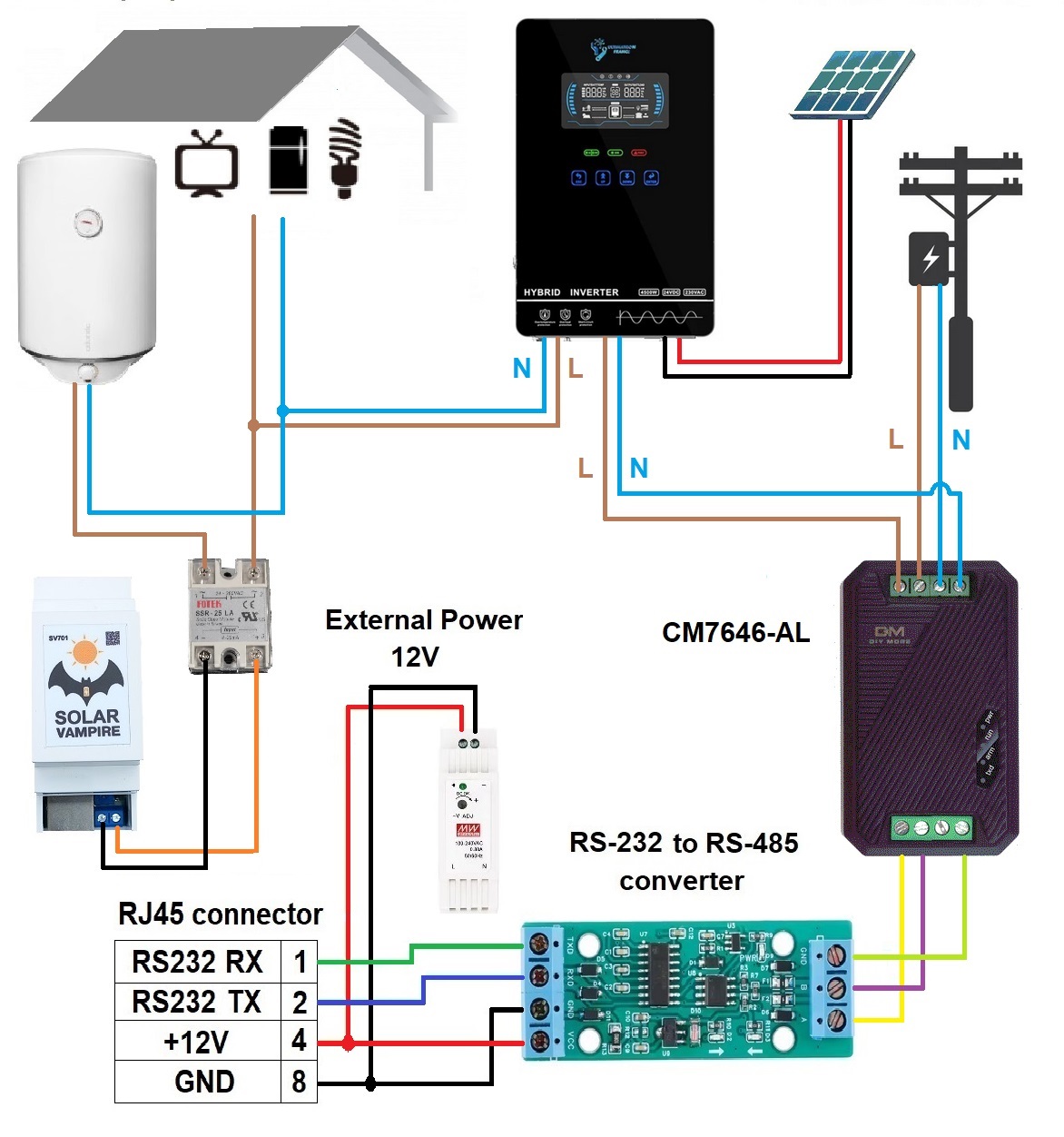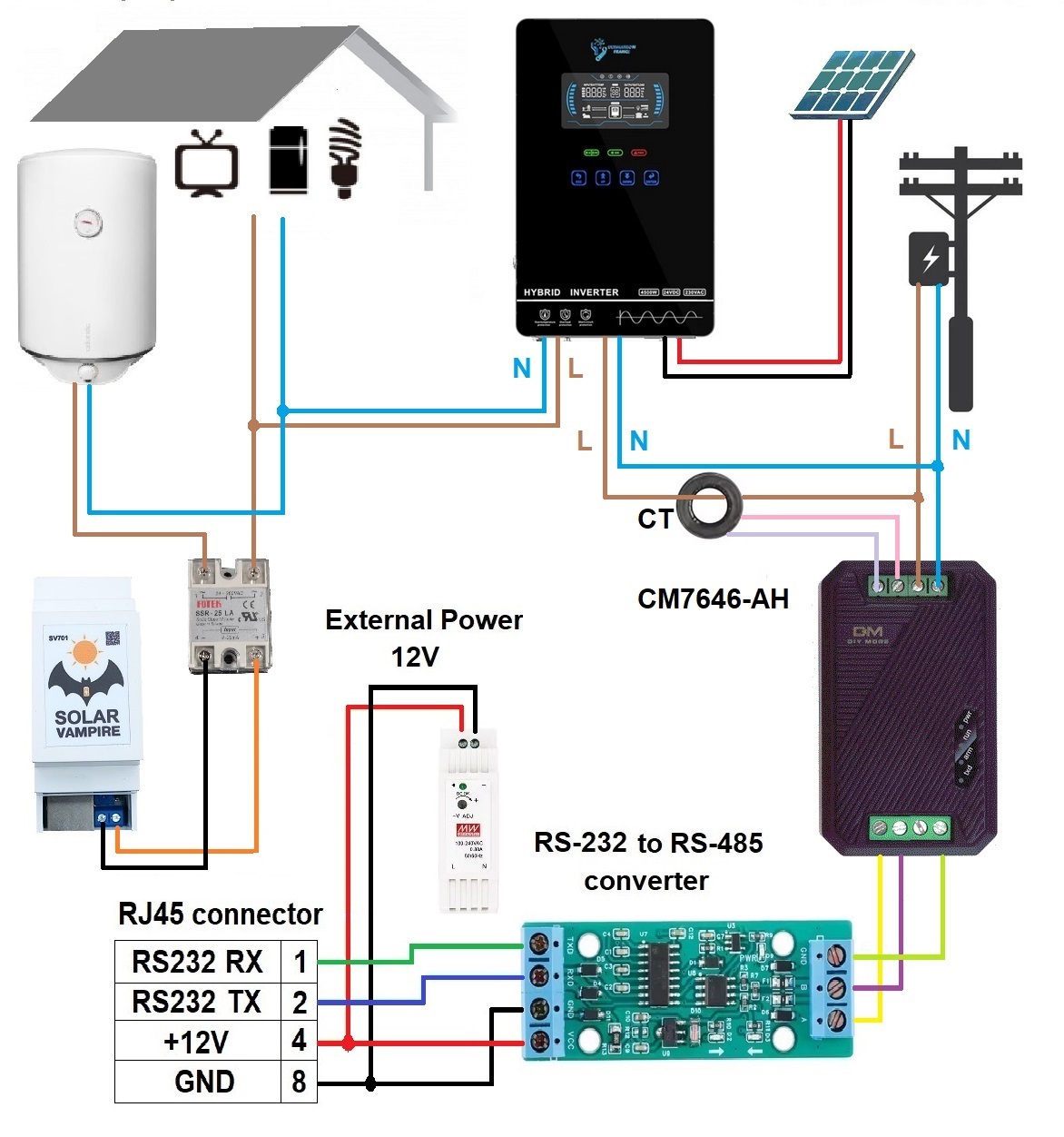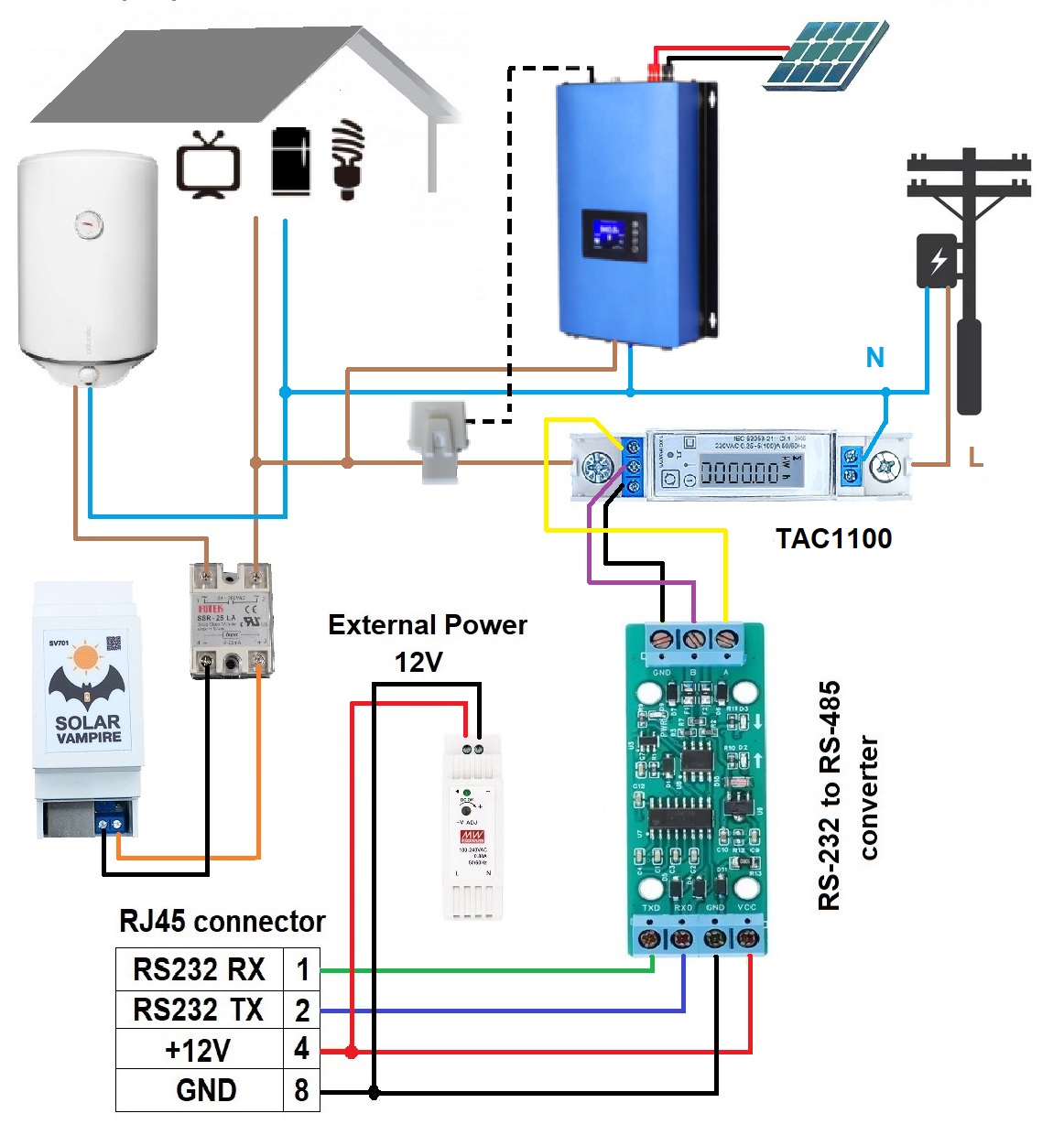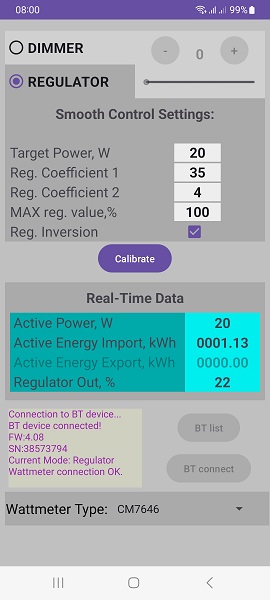Alternative mode with a wattmeter
In the process of adding support for new types of inverters, we encountered the fact that it is not always possible to establish information communication with the inverters. Some inverters do not have the appropriate external interfaces or have an encrypted protocol (for example, PowMr 4.5/6.5 kW). We also received requests from grid-tie inverter owners who would like to dump excess solar energy from their systems into a ballast load, rather than limit generation using limiters. To support such devices, we have developed an alternative operating mode SV701. In this mode, instead of connecting to the inverter, the SV701 device is connected to a wattmeter.
Theoretical foundations
This method uses control of alternating current energy flows to determine the presence of excess solar energy. The reference is an external AC grid. Grid inverters or hybrid inverters in the so-called admixture mode work like this. When there is enough solar energy, they supply the entire load from the sun. When there is a lot of solar energy, they reduce their generation so that there is no export to the external grid. When there is not enough solar energy, energy from the external grid begins to be mixed into the load. Therefore, the adjustment algorithm looks like this. A bidirectional wattmeter is installed at the input of the external grid. The load at the inverter output increases until there is no longer enough solar energy and a small consumption from the external grid begins. Then this small fixed energy import is maintained at a constant level by adjusting the consumption of the ballast load. Moreover, it does not necessarily have to be an import. If desired, you can also fix the export of energy to the external grid at a certain level.
Practical implementation
There are many wattmeters/energy meters on sale that are declared as bidirectional. We tested several models and found that many of them are not suitable for our purposes for one reason or another. We selected two inexpensive suitable models - these are TAC1100 and CM7646. They have approximately the same metrological characteristics. The first model has its own LCD and a design for installation on a DIN rail. The second is available in two modifications - with an internal shunt for currents up to 20A and with a current transformer for currents up to 100A. Typical connection diagrams in different versions are shown below. Any of these wattmeters can be used with a grid-tied inverter or a hybrid inverter, either in grid-feed mode or in zero-export (blending) mode.
Typical circuit with wattmeter CM7646-AL

Typical circuit with wattmeter CM7646-AH

Typical circuit with wattmeter TAC1100

Control via Android application

The control in this application is similar to the control in the application for communication with the inverter. Bluetooth pairing is performed in the same way. You can read about this in the main section. Now the output power of the wattmeter is set as the target value. A positive value means import of electricity, a negative value means export. The coefficient K1 sets the general speed of adjustment, the coefficient K2 - the speed of reaction to large power surges. There is also an output power limiter MAX Reg Value. The next adjustment is Reg.Inversion, it sets how the regulator should react when the target value increases - to decrease or increase the power of the ballast load. For the typical circuits given, inversion should be enabled. The Calibrate button is necessary for adjusting the system to a specific heater and a specific SSR relay. Calibration is mandatory, but it is enough to do it once. The calibration process itself lasts about a minute. During this time, the device runs the load from 0 to 100% twice. During calibration, it is advisable to t urn off all other loads in the circuit except for the ballast load SV701. Or at least ensure a constant level of consumption of the remaining loads during calibration. The Real-Time Data section displays data received from the Wattmeter. This is the current power, as well as energy. The TAC1100 Wattmeter calculates energy export and import separately. The CM7646 Wattmeter sums up energy from both directions, so all of it goes to the import section.
As already mentioned above, in the circuit with a wattmeter, the presence of excess energy is determined by its flows. As a target value, it is necessary to set the power level from the network and the system will try to maintain it using feedback. For most applications, it is reasonable to set 20-50 W here. When the solar energy production by the inverter decreases, SV701 will reduce the ballast load, and when it increases, it will increase it. The selection of coefficients is carried out as follows - if K1 is small, then the adjustment will be slow, if it is too large, then the system may over-regulate up to self-excitation. Similarly with the coefficient K2. The default parameters are quite suitable for most systems.
Features of the mode
Power regulation in such a system does not occur instantly due to the inertia of wattmeters. Therefore, with sharp changes in consumption or generation, the system needs a few seconds to return to a stationary point. At these moments, small short-term energy flows in both directions are possible. For example, a hybrid inverter, even in the zero-export mode, can generate into the grid at such moments. Do not be surprised by this, this is a feature of the zero-export mode. Such flows are always possible in the zero-export mode and without the participation of SV701. Simply, a bidirectional wattmeter allows you to see these flows.
Tests with the SUN1000 G2 grid-tie inverter showed that the wattmeter gets along well with the standard limiter of this inverter. The system can increase the ballast power using the wattmeter, but additionally reduces generation during attempts to generate into the grid.
Disclaimer
We guarantee that our equipment will function as described on this website, provided it is correctly installed and operated.
However, the responsibility for proper assembly, connection, and usage rests entirely with the user. We are not liable for equipment damage, system malfunctions, data loss, or other harm caused by violations of instructions, use of the device in unsuitable conditions, or tampering with its design.
The use of our kits is at your own risk. Before starting, ensure you understand all aspects of the assembly process and subsequent system operation. If you have doubts or lack sufficient experience, we recommend seeking professional assistance.
